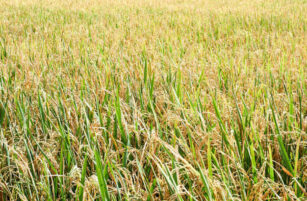Insight Focus
- Brazil received 1.750m tonnes of corn in Jan-Sep 2022, 7% up from the same period in 2021.
- Several factors explain the strong imports, including a production rebound in neighbouring Paraguay.
- Imports are likely to slow down in Q4, but firm exports will remain in the spotlight.
Brazil is at the peak of its corn export season and the market’s eyes, naturally, are on the volumes that have been shipped at the country’s ports – especially in times of below-normal exports in Ukraine and a new Brazilian production record. But, although I’m still going to write about the strong pace of Brazilian exports, I want to begin this article by having a look at imports, which remain strong even after a bumper crop.

Brazilian customs data released earlier this week show that the country imported 1.750m tonnes of corn between in Jan-Sep 2022, the largest volume on record for the period, surpassing by 7% the imports made in the first nine months of 2021 – a year in which Brazil had a huge crop failure due to drought and had to resort to foreign corn to meet its domestic demand, especially in regions further away from the main producing areas and/or where local producers held on to the grains waiting for higher prices.

4 Reasons for the Strong Imports
With a large increase in production now in 2022, the expectation was that Brazilian corn imports would lose steam. But that’s not what happened until September. There are basically four explanations for why imports have remained strong:
1) Nearly 75% of Brazilian corn production enters the market only in the second half of the year, when the second crop (“safrinha”) is harvested. Therefore, the first months of 2022 were still “contaminated” by the 2021 crop failure.
2) The 2021-22 first corn crop was smaller than expected in southern Brazil, especially in the state of Rio Grande do Sul, due to hot, dry conditions in Dec 2021 and Jan 2022. Major pork and chicken producers, Brazil’s southern states need to resort to corn from other states, or from neighbouring Mercosur countries, to meet the corn demand in years when the crop fails. As buying corn from other states is more expensive due to long distances and local taxes, it often makes more sense to bring corn from outside Brazil.
3) A stronger Brazilian Real against the US dollar (it got below BRL 5 to the dollar several times since the beginning of the year) favoured imports from Mercosur, reducing prices and making foreign corn more competitive, especially in regions where Brazilian producers, even after harvesting a record “safrinha” in 2022, continued to wait for higher prices to sell.
4) The recovery in Paraguayan production, which also produces “safrinha” corn, after the soybean harvest, favours Brazilian imports, especially in the neighbouring state of Paraná, due to better ogistics. Paraguay harvested 5m tonnes of corn in 2022, compared with 3.2m in 2021, when its crop also had a drought-related failure. Not by chance, Paraguay was the origin of 83% of the 1.750m tonnes imported by Brazil in Jan-Sep 2022.

Despite fighting with Argentina for the spot of the world’s second-largest corn exporter, behind only the US, Brazil imports some volumes every year due to the logistical and tax issues described above. In 2021, imports were larger and totalled a record 3.025m tonnes – most of it from Paraguay and Argentina – because of the extent of the “safrinha” crop failure.
Although imports in Jan-Sep 2022 are at a record level for the period, the expectation is that volumes will shrink in Q4, as the 2022 “safrinha” farmer selling has progressed well over the last two months and the Brazilian Real above BRL 5 to the dollar doesn’t favour the import parity. Brazil’s crop agency Conab puts the 2021/22 imports (Feb 2022 to Jan 2023) at 1.9m tonnes. AgRural, for its turn, works with 2.2m for the calendar year (Jan-Dec 2022).#

Heated exports
With the huge production recovery seen in 2022 and the domestic consumption met by imports and the improvement in the farmer selling pace, Brazilian exports have had room to bounce. After shipping 7.5m tonnes in Aug 2022 – the highest monthly volume in history – the country exported 6.9m tonnes in Sep 2022, a new record for the month.

From Jan 2022 to Sep 2022, Brazil exported 24.7m tonnes of corn, surpassing the 20.4m shipped in the whole of 2021, when exports fell due to the smaller production. AgRural expects that exports will end the year somewhere between 37m and 39m tonnes, the second largest volume in history. It is not ruled out, however, that the final volume will reach 40m tonnes, especially if shipments from Argentina lose momentum in Q4 and if Ukrainian exports continue below normal due to the Russian occupation.
The record of 42.7m tonnes made in 2020, however, is not likely to be beaten because Brazilian domestic demand is firm, driven by the meat sector and ethanol production, and because corn prices are still high in Chicago, limiting increases in Brazilian export premiums and preventing importers from meeting the price levels that some Brazilian producers still want to see before selling a bigger chunk of their stocks.




















